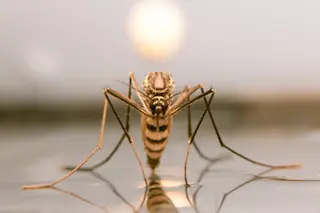(Credit: khlungcenter/Shutterstock) It’s one of the cardinal rules of shipping something fragile: The more tightly you pack your cargo, the better its chances of reaching its destination in one piece. It turns out, the same rule applies for mailing mosquitoes, according to a new study in the Journal of Insect Science. While your average Joe probably isn’t sending off boxes of the blood suckers (at least, let’s hope not), scientists sometimes need to ship live batches. Often, those shipments are part of population-control efforts in areas where mosquitoes frequently transmit diseases like Zika, malaria and yellow fever. Researchers can modify the insects in a number of ways — from genetic engineering to infecting them with certain bacteria — to disrupt their ability to reproduce. When they’re released in the wild, they’ll still mate as usual, but it’s a futile effort that helps tamp down population levels. However, the labs engineering ...
To the World’s Horror, Researchers Have Finally Figured Out The Best Way to Mail Mosquitoes
Discover how tightly mailing mosquitoes enhances their survival rates during shipping for population-control efforts.
More on Discover
Stay Curious
SubscribeTo The Magazine
Save up to 40% off the cover price when you subscribe to Discover magazine.
Subscribe













